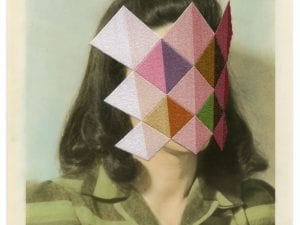It is estimated that by 2050, 70% of the world’s population will live in urbanised, industrial surroundings. Consequently, the existence of rural communities and environments is decreasing rapidly, and, as the pace of life quickens, a desire to escape from the pressures of modern life becomes prevalent. Examining this newfound state of reality and assessing its effects on the human condition, current exhibitions and projects embrace, escape and offer solutions to these issues.
For example, photography shows such as Michael Wolf: Life in Cities at Fotomuseum Den Haag, Netherlands, (until 22 April) and Wilderness at The New Art Gallery Walsall, (until 6 May) explore contrasting experiences of contemporary existence. Fotomusuem’s presentation embraces the claustrophobic urban landscape, whilst Wilderness offers visions of an escapist utopia. By way of an answer, an influx of digital media and VR in the institutional realm blur the boundaries of authentic experience, offering individuals a way to break away from the quotidian. Now implemented across the gallery landscape – including at Tate Modern, London, enhancing the current Modigliani exhibition – and utilised by practitioners such as Aesthetica Art Prize artist Henry Driver as a way of bringing communities together, VR offers an optimistic – if not unsettling – resolution. As photographer Scarlett Hooft Graafland (b. 1973) notes: “In our high tech western world we live in our own wilderness…Many people feel a loss of control over their lives, where technologies portray a seemingly ‘perfect’ existence.”

Implemented across multiple industries, including gaming, film and even physiotherapy, VR has made its mark across the world. Now utilised by prolific creative institutions including the Royal Academy, London, and the National Science and Media Museum, Bradford, the medium is transforming traditional exhibition models, enhancing viewers’ interpretational frameworks. Open until 2 April, Tate Modern’s Modigliani is an example of this considers the pioneering legacy of the 20th century painter, elevated by a collaboration with HTC VIVE technology. By using this digital platform for the first time in the gallery’s history, audiences can unlock a detailed level of understanding, visiting a simulated version of the practitioner’s world.
Beyond the gallery walls, contemporary visual image-makers experiment with the potential of a second reality, promoting interactive VR, video, photography and sculptures. For examples, Driver’s recent project with Collusion at Bury St Edmunds, on display until April, comprises data driven artworks which use facial detection and CGI to explores the boundaries between human beings and artificial intelligence. The public artwork connects people using computer technologies, synthesising interactive avatars which exemplify human/computer interagency.

By contrast, Michael Wolf (b. 1954) revels in the anonymity of the built environment through two dimensions, capturing the chaotic movements and overlapping structures which dominate urban jungles. Tokyo Compression (2010) records the lively, congested city, questioning the implications of urban sprawl whilst revealing an inherent lack of privacy. The photographer’s colourful, smog-clouded compositions capture candid scenes of commuters squeezing into packed trains, highlighting a marked lack of personal space. Furthermore, Architecture of Density (2003-2014) zooms out from the personal, looking instead to the patterns and geometry created by the monumental buildings which command the crowded skyline. Hundreds of tiny, indistinguishable windows are compacted into Wolf’s flat, large-scale prints, transforming the cropped, static high-rises into glitch-like surfaces.
Departing from the metropolis, Wilderness features analogue studies by Dutch practitioner Hooft Graafland. The unmanipulated images document “surreal landscapes, vibrant icescapes, coloured lakes and immense salt flats”; endless vistas which provide a stark counterpoint to the topographies on display at Fotomuseum. Yet, by applying a similar methodology to both Wolf and Driver, the practitioner unearths the defining aspects of local communities by working alongside them. “I love to travel to austere locations where the local people are part of a distinct, unique culture,” she notes.

For example, Wrapped (2007) (shown above) depicts a desolate icescape, highlighting alternative ways of living by foregrounding an igloo wrapped in yellow ropes collected from local huntsmen. Reassessing the beauty of global topographies, the show offers, as Hooft Graafland notes: “a sense of silence.” The colossal expanse of these hidden, unknown locations offers an “essential experience of being”, providing an immersive experience which almost mirrors that of digital technologies. The hyperreal nature of these untouched scenes provides a serene yet surreal experience, reflecting the uncanny virtual worlds now embraced as the new normal.
Each of these practices presents a concern for the collective, facilitating interaction and understanding between communities. Despite the perceived conflict between natural, urban and digital realities, these practitioners exemplify how the creative landscape offers spaces for productivity, reflection and escapism, offering a diverse – yet ultimately optimistic – vision of the future.
Credits:
1. Seven Steps of Overlapping Beauty © Scarlett Hooft Graafland. Courtesy Flowers Gallery
2. Henry Driver, Video Cube, 2015.
2. Michael Wolf, Architecture of Density #91, 2006
3.Scarlett Hooft Graafland, Wrapped, 2007. Courtesy Flowers Gallery





